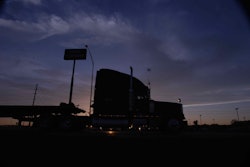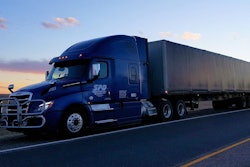
When Cardinal Logistics Management Chief Information Officer Clay Holmes first started his career doing automotive transportation for J.B. Hunt, his drivers were required to call in every two hours from phone booths along their route to update load status. The adaptation of cell phones phased out that practice and the smartphone completely revolutionized it.
Holmes, leading a breakout session at CCJ‘s Spring Symposium titled “Getting Started With Final Mile” in Hilton Head, S.C., Tuesday, says with iOS or Android devices it is possible to merge enterprise and consumer apps in one place.
“When you’re going to do final mile mobility, that device preferably you want it to be the same thing that does your DVIR, your driver logs … everything,” he says. “Once he’s started the trip, you want that device to walk him through what he needs to know.”
Cardinal Logistics, a third-party logistics provider, also has a fleet of assets and drivers while contracting with fleets and owner-operators for extra capacity.
When making deliveries for cabinet-maker Kraftmaid, Holmes says Cardinal drivers scan various individual items at offload, but when picking up dairy products from another customer drivers need to capture a different data set like the identification number of silos and bins.
“Within three months of drivers using the device, they would not leave unless they had a handheld because it just made that [check and verification] process so much easier,” he says.
Technology can be expensive but Holmes says not to overweight upfront cost savings because add-ons can quickly wipeout any savings and leave fleets with an inferior device.
“The devices that Apple is coming out with now are almost as expensive as the enterprise devices and once you add a rugged case [apps and accessories], they get pretty close to the same cost,” he says. “[Apple] wants to sell a new phone every six months. Enterprise devices, they want those devices to be around for a while. When you spend a lot of money to develop an application, you don’t want it to stop working every six months when something new is thrown out there.”
Enterprise devices also allow fleets to control how the drivers use the tool, often prohibiting them from using phone and data for personal needs during driving time. Holmes says that it more difficult with consumer-grade devices.
“If [the driver] is on a website or searching the web, odds are he’s not doing his job,” he says. However, Holmes says long-haul drivers should get greater flexibility when it comes to non-driving usage.
“At night, maybe that driver wants to Skype with his wife or to call home,” he says. “That guy probably needs a different data plan than a regional driver.”
If you get a device that doesn’t use a SIM card, Holmes you’re probably going to be unhappy. If the phone’s data is embedded in the device, Holmes says you’ll have to port the number over anytime you change equipment. The SIM card allows for greater flexibility.
Holmes also suggests avoiding the temptation to add apps “just in-case.”
“When you add something to the device that the driver is going to use once every [few months], in five months down the road he doesn’t remember how to do it,” he says. “Just because something can be done, doesn’t mean you want it on the device.”











